I consider Solitude my home hill.
That’s a fairly insane statement from someone who has to jump a 4.5-hour flight from Newark, New Jersey to get there. But it’s been my go-to mountain for the past few seasons.
After falling in love with Solitude, I scrimped, saved, and waited until I could afford to convert my already-extended savings and credit into a place to live at the base of the mountain. This serves as my headquarters to ski, bike, and hike from. The peace and quiet also provides a virtual sensory-deprivation tank in which I can unwind.
On paper, Solitude is a mountain that’s easy to dismiss. The phrase “contempt prior to investigation” comes to mind. If Solitude were located anywhere in the East, it’d be considered a Top 5 ski area, but with so many world-class mountains in such close proximity, most people don’t even bother with it. Smack in the middle of the SLC-area Wasatch, it’s sandwiched between Little Cottonwood Canyon to the south and the Park City megalopolis to the north, all of which I had skied extensively — and even ski-bummed — back in the late 1970s.
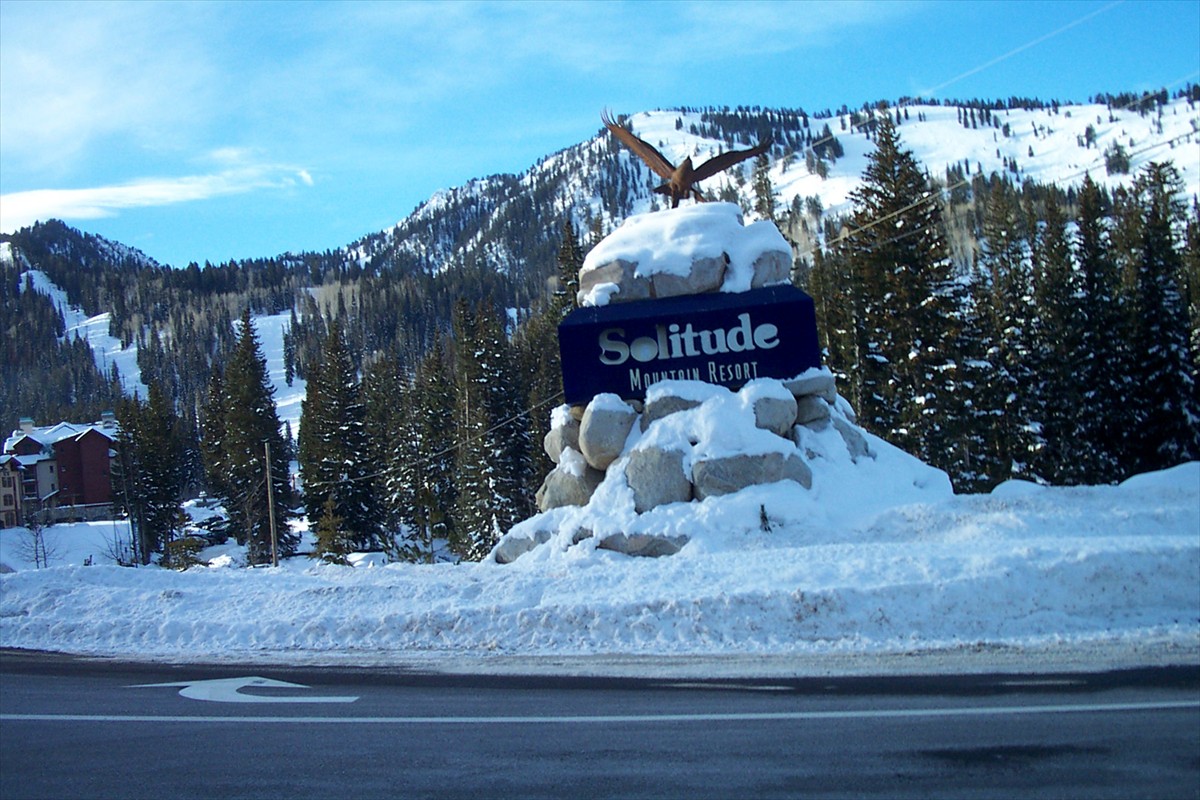
Until a few years ago, my experience with Big Cottonwood Canyon consisted solely of looking at trail maps, statistics, and descriptions of Solitude and Brighton to gauge whether they were even worth my time. My ongoing conclusion was that they were both way too small, until chance brought me and my family to Solitude around Thanksgiving of 2006. The skiing that day consisted of little more than man-made snow on groomers. But a glance at the potential surrounding me and a few wind drifts just below the top of the Summit chair justified another visit.
A month later, I was back in SLC just before Christmas when my daughter and I decided to check it out again. After boarding a UTA bus full of boarders at the mouth of the canyon, the first sign of good things to come was realizing that we were the only ones to disembark at Solitude. The ratio was two of us getting off the bus at Solitude and 50 staying on for Brighton. This seemed promising. The base lodge parking lot was practically empty and the lodge itself was nearly deserted. No lift lines? What’s going on?
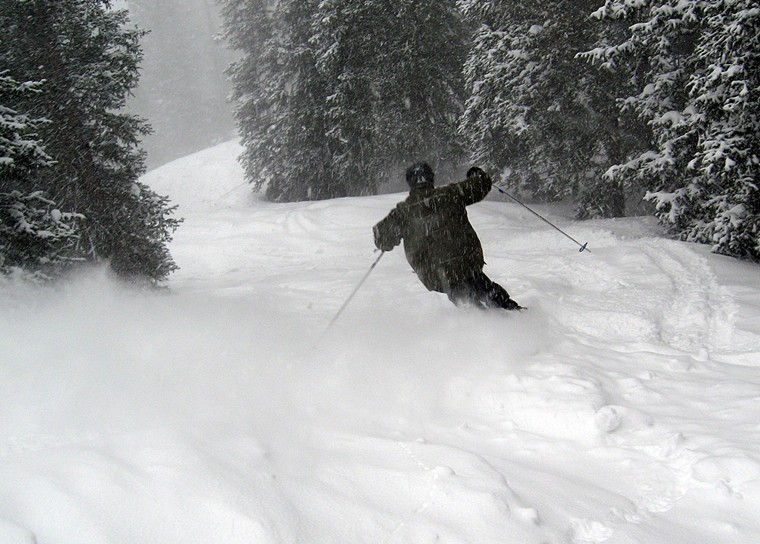
The next good sign was the excellent (even by Utah standards) conditions. The surface across the groomers was uniformly good. More importantly, it was easy to find stashes of foot-deep powder from the previous storm five days earlier. I had found my drug-of-choice mountain and with it a resolve to find a vacation place to buy there. Mind you, up until that point, I had skied only a handful or two of days at Solitude and had only scratched at the expansive terrain options. Two years and multiple trips later, I lucked out and was able to reel in a place to buy.
What You Can Expect
Virtually every ski area in Utah has the basics: great snow, both challenging and mellow terrain, decent burgers, and 3.2 beer. To sum it up, what I find so attractive about Solitude is precisely because the mountain is so hard to sum up.
Ski industry personnel refer to sections of mountains as “terrain pods,” which are normally centered around one or more lifts. Each of Solitude’s pods has a very distinct character, so a lot of variety is packed within its 1,200 skiable acres. Once you learn your way around, the mountain feels even bigger than it first appears.
To really get the flavor of this mountain, let’s go on a virtual ski day through Solitude.
A typical day often starts at the Moonbeam parking lot. From here, you can buy a ticket at the Moonbeam Lodge and walk a few yards onto the Moonbeam chair. This lift takes you about a third of the way up the mountain.
Let’s assume that it snowed the night before (not a bad assumption). Instead of wasting time on the Moonbeam area’s flats, let’s head into the bowl above us, the area served by the Powderhorn II lift: the geographic center of Solitude. Taking the chair up, we rise past the top of the Eagle Express lift on the right (to be saved for a bit later), into the upper half of the bowl. This area has a few wide trails, some tree shots and a cirque full of other steep runs.
Before the Powderhorn II lift went in a few years ago, you could easily access powder and cut-up snow almost any time, because fresh tracks would last from storm cycle to storm cycle. The new lift made this part of the mountain much more accessible than before, so if you want pristine powder, this bowl has to be skied quickly after a storm. Let’s take a few runs here, one on a trail and another in the cirque in totally untracked conditions.

After a few runs, we’ll collect some speed past the bottom of the Powderhorn lift, across some short flats, past the Round House lodge and into the Eagle Express (or simply “Eagle”) area. Here, we have a choice of a half dozen or so slopes that provide a great selection of easy blue-trail heaven. At the bottom, you’ll run into locals with multi-day and season passes who have bypassed the ticket office and headed straight from the west end of the Moonbeam lot to the lift, vying for first powder. (You’ll probably see many of them having tailgate parties in the afternoon.) The lift will be crowded in a Solitude sort of way: either you’ll get right on or, worst-case scenario, have to wait one or two chairs before you can load. However, within an hour after the lift opens, this area will be pretty tracked out.
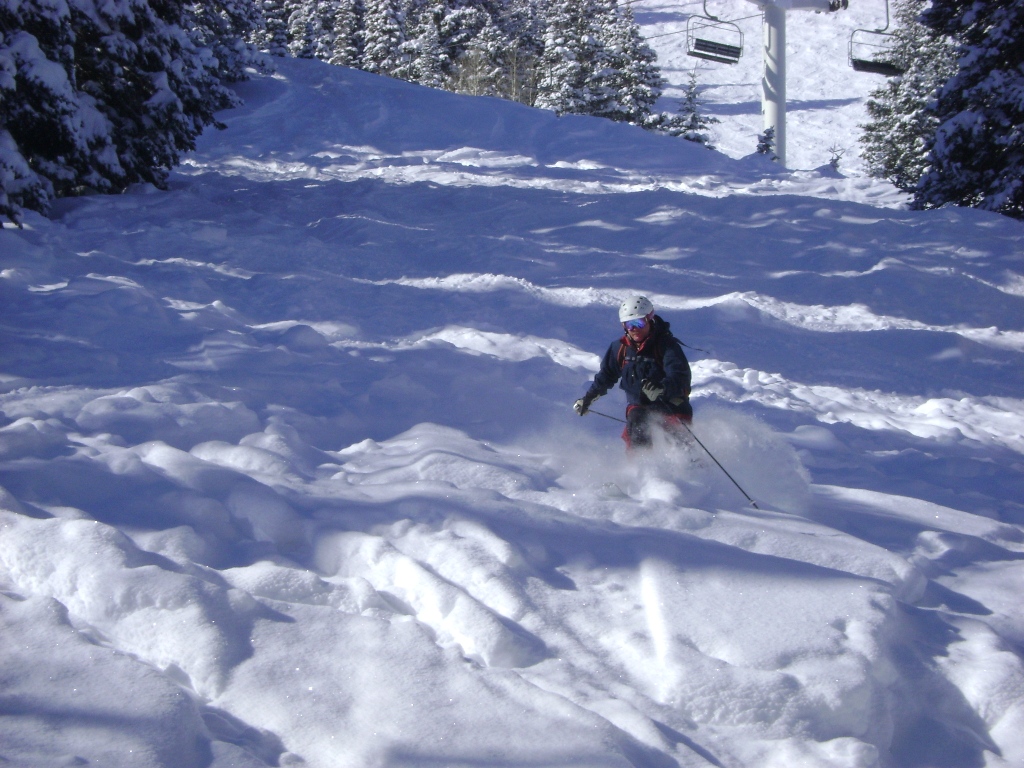
The Eagle Express takes us to a saddle on the ridge separating the main side from Honeycomb Canyon. Since it’s early in our hypothetical ski day and Honeycomb is still closed for avy control, we’ll drop back towards the resort’s center, then head to the base at the eastern edge of the resort where the Apex and Sunrise lifts load. The removal of the old Powderhorn lift made this seldom-skied area even less busy. We’ll also pass on the handful of runs under the Apex chair that, by the way, are great after a storm. We’ll continue with a few runs off the Sunrise lift.
Sometimes it seems like Sunrise has been hung out to dry by Solitude’s management and it’s usually the least crowded part of the mountain. It’s a slow chair and you can often hear first-timers on the chair behind you complain about that. Also, the lift starts further uphill from the village than Apex, involving a walk up from the village.
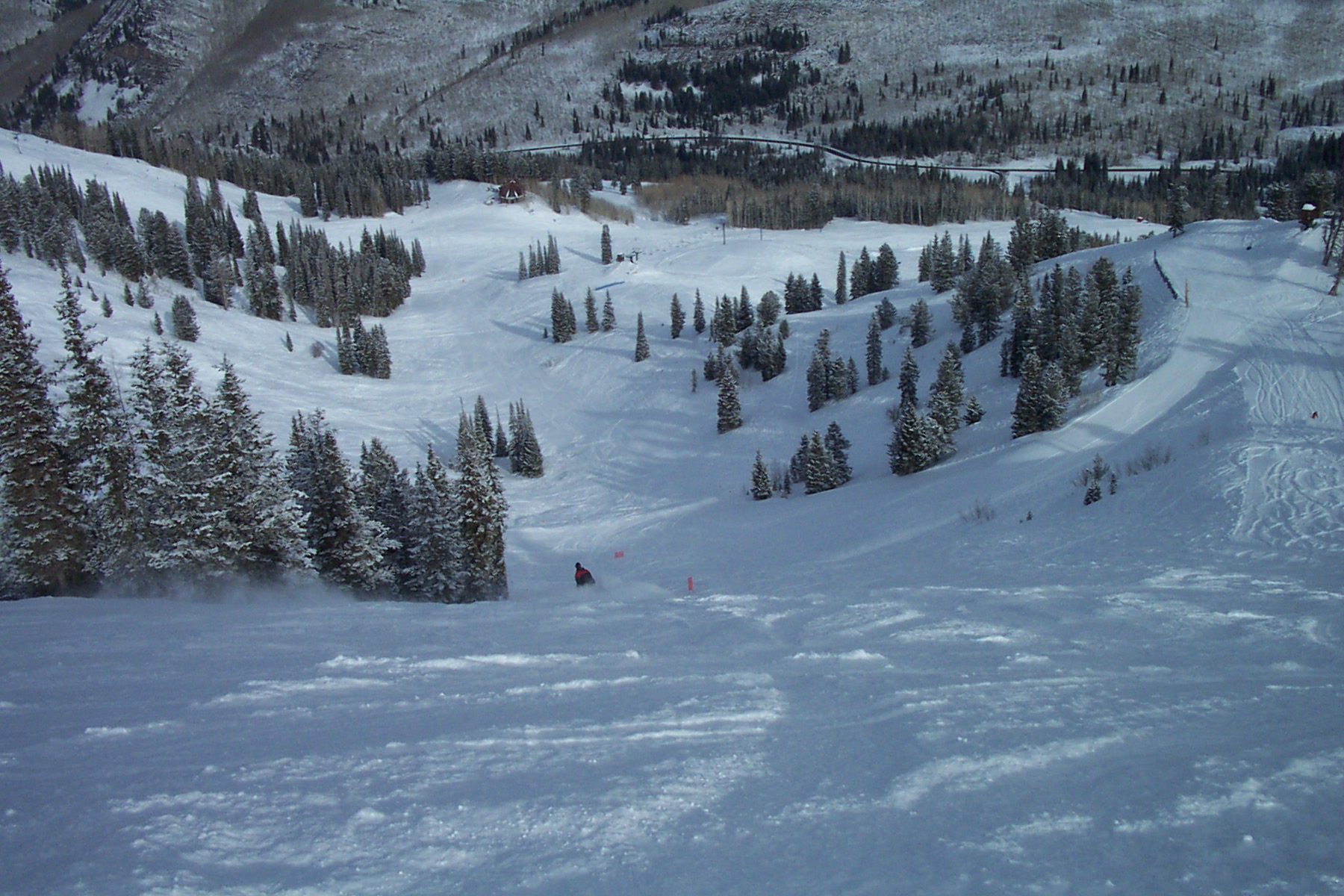
Still, on any given day, the Sunrise area might be my favorite place at Solitude. It’s rare to see more than a quarter of the chairs occupied. The blue runs often stash powder into the afternoons and there’s some great tree skiing in between. Sunrise is also the most common way to access the Summit chair, which has a bunch of extremely diverse runs. As you move east away from the Summit lift and towards neighboring Brighton ski area, you’ll find short drops like Corner Chute and (with a traverse) Evergreen Chute, plus dips past well-spaced trees in the Headwall Forest. While we’re here at the Summit, we can also take the Sol-Bright trail to the west edge of Brighton. Alternatively, a drop off the backside (with AT skis, beacon, shovel, probe and a friend or three), could take us right into Little Cottonwood at Alta.
Honeycomb Canyon (shown in the photo at the top of the article) is also diverse. It’s a long, somewhat circuitous chasm with two primary sides and a long blue-ish run out down the middle with a few steep drops thrown in to keep you on your toes. The south and west side is one long headwall. Traverse as far as you want (or can) and drop in from there to the runout. The farther you traverse, the longer the run and the shorter the run-out.

The east/north side of Honeycomb consists largely of tight chutes and trees. Traversing off the Summit chair is an option, but so is going back around front and dropping into the top portion through the gates off the Powderhorn lift or the bottom portion off of Eagle Express. Speaking of which, if you like steep tree stashes, the Navarone and Queen Bess areas are both very worth hitting from the Eagle Express or Honeycomb return lifts.
We’ve just circumscribed the breadth of Solitude, but this has been a brief summary. There’s a huge amount we didn’t cover, including Solitude’s Fantasy Ridge, a crazy rock scramble up and short chutes down to Honeycomb, touted as some of the scariest inbounds skiing in North America. I’ve never skied it.
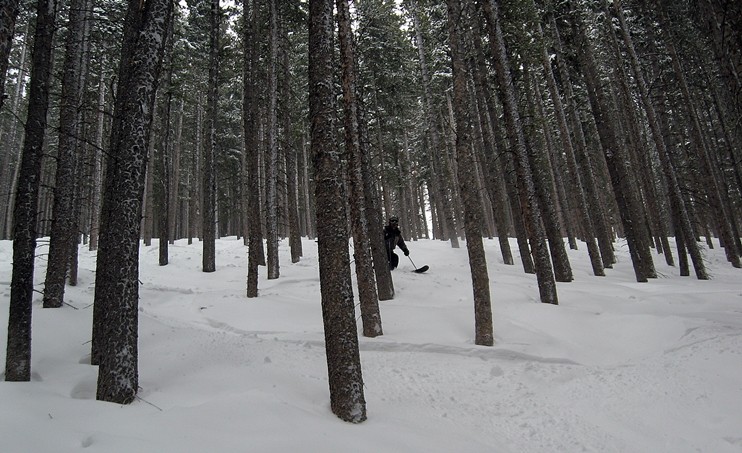
I’ve logged at least 50 days at Solitude, but it feels like I’ve only explored a fraction of the terrain. To sum up my thoughts, following are what I consider Solitude’s main selling points:
Extensive Exploration Potential On Varied Terrain: The entire vertical is more than 2,000 feet, but the continuous vertical on any single run is far less. If that’s a deal killer, go elsewhere.
Uncrowded By Nearly Any Standard: Far more elbow room than most other Salt Lake area resorts.
Great Snow Quality: Only beaten in this category by Alta and Snowbird. The upside is the comparatively small number of skiers, which means that you can find powder stashed longer than the Park City and Little Cottonwood ski areas.
Easy Access: Not only a short drive from SLC airport, but you’re unlikely to have road closures (like that other Cottonwood Canyon), and once at the resort you can park practically at the lifts.

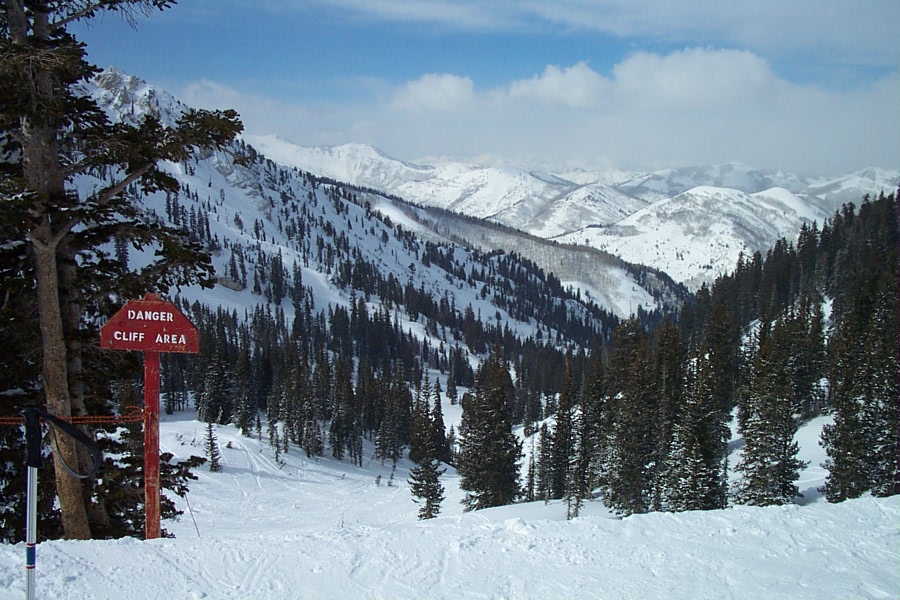
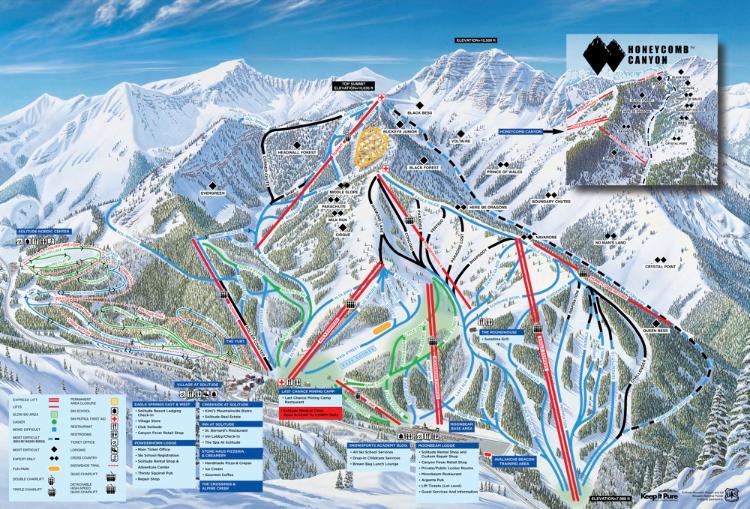
Nice coverage on Solitude. Makes me want to go back 😉
Solitude was my favorite mountain in the Wasatch for sure. I just wish we had some better snow! I’m sure I’ll be back at some point.
Bryan: I’ve always been curious why Solitude refuses to offer a traditional season pass. If I understand correctly, instead of buying a pass that allows you to ski every day, you buy individual days.
Regulars love it because it probably keeps skier numbers down (Solitude’s biggest differentiator), but I never figured it out from a business standpoint. Wouldn’t they get more revenue by going to a regular season-pass format?
Excellent write-up. I got a chance to ski a half dozen different Utah ski areas this past winter, some for the first time including Solitude. The Summit Chair terrain and Honeycomb Canyon at Solitude were among my favorites of all the stuff I skied. The cliff face of Fantasy Ridge rising above HC is super scenic. I also thought the little self-contained Solitude Village (a handful of condos/hotels, shops and eateries) would be very attractive for a ski-week vacationer wishing to escape the crowds, while enjoying good snow and terrain. Plus, the slopes of Brighton are literally right next door.
Slow chairs, ignored terrain, tight chutes and trees, powder stashed in nooks and crannies, all on an “overlooked” mountain.
Sounds like my kinda place.
Bryan – great article! I could not have summed it up better myself. I too grew up in NYC and now work for the resort and you really hit the nail on the head.
As for season passes – we do have the custom season pass a previous commenter alluded to, as well as a traditional (all 7 days) season pass for $999.
Hit me up next time you are at the mountain – we’ll spin a few laps together and I’ll buy you a non-3.2 beer. Maybe even get you up Fantasy Ridge…
Great article on my favorite ski area in Utah. Maybe not the biggest or flashiest area but a real gem if you know where to look. I like to hit Solitude 2 days after a dump because they usually don’t open Honeycomb the first day due to avy controll. Sometimes I’ll just lap it all day. My best is 7 laps out to the east facing aspects. Almost always fresh tracks! One of the other reasons I love Solitude is that’s where I met Powderqueen and began a great friendship! I just happened to get on the lift with her and the rest was history as they say. Must have been fate!
Nick: Thanks for the info on the season passes and answering James’ question. I had thought the cost was higher than $999; that pretty reasonable all things considered. But, I usually buy the multi-day passes that work out to $40 a pop. If I skied enough days to hit the season pass amount (i.e., more than 25 days) instead, I’d be grateful enough that I woudln’t mind paying more. OK, maybe I would. Yes, I’ll look you up. But, Fantasy Ridge? I don’t think so.
Bryan
This is a great review, and it’s making me pretty damn excited that a week at Solitude kind of fell in our family’s laps (via a house swap…long story). I have skied Alta and Snowbird, and a few years ago the family did a trip to Breckenridge. When I first read up on Solitude I was a little concerned it was going to feel small and tame compared with those. Not that we’re over-the-cliff extreme types, but we ski most of the back bowls and double blacks. But based on this…well I think we’ll do just fine. One question: do you have a recommendation for an instructor/guide who could do a half day with everyone from my 65-year-old mother to my eight-year-old daughter? (We all ski similar stuff, believe it or not). I’ve often found that it’s worth spending the $$$ to spend a few hours with someone who really knows the mountain inside and out and can help get us to the good stuff!!
Solitude is still touted as being one of the best kept secrets in skiing. We also have been returning year after year with our family (they have virtually learned to ski here in the quaint and high instructor ratio Ski school) as well as last year just by ourselves for a romantic getaway and a get away from it all ski retreat. We have referred so many friends who have become loyal Solitude skiers as well! By the way pick up your groceries on the way to the resort somewhere in Salt Lake (there are dozens on markets along the way if you google the map) as Solitude itself does not have a grocery store nearby.
Just to update the clan, Solitude really IS now my home hill. I moved here in February. Heaven!!!!
congratulations on the move, and I’m glad this article percolated back to the top somehow! Very nice writing and pics…. Maybe you could do a DV summary sometime now that you can ski them both on one pass!
“Very nice writing and pics”
+1 Those are outstanding pix!
I worked at Solitude on the Patrol and know that the Patrol has a program called “Back Tracks” that will take you just out of the resort to ski some great terrain and I am sure you can get one of the guides to show you around the area of the mountain complex.
You will find some of the best tree skiing, straight shots in beautiful gullies that you may think you went to heaven, and some vertical that may make your tummy churn. No, it is not the length of Alta or Snowbird,or even Park City, but the snow is always better and there is NEVER a CROWD any day. It is the prettiest terrain in the Wasatch and unlike Alta and the Snowbird canyon you do not have to do the slow crawl down the road forever, Big Cottonwood Canyon and Solitude do NOT have those problems. That in itself is a huge plus trust me.
I came from working in Stowe, Vermont, to work at Solitude for one year in 1991, and never went back. I do not work there now, but still love it.
Like most visitors, you need to “SKI THE FREEDOM”. Just don’ tell any one when you go home. It will be the people already there, and now you too have the SECRET.
ENJOY and I will show you around but I know “FAST TRACKS” will do a better job.
Sorry for the ramble.